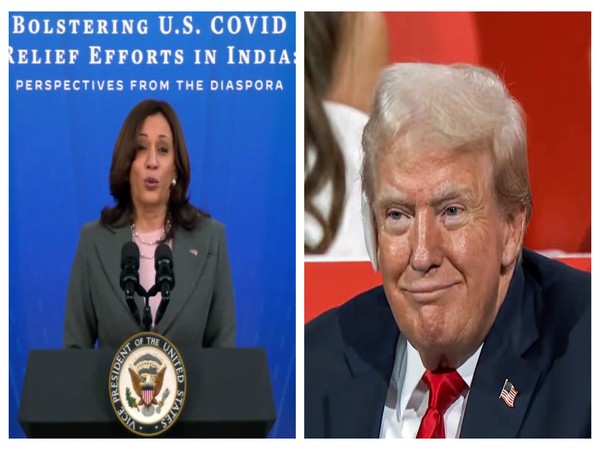Americans are heading to the polls today to cast their ballots in the highly contested 2024 presidential election, where Democratic candidate Kamala Harris and her Republican rival, Donald Trump, are locked in a tight race.
This is the 60th presidential election in the US. It is interesting to note that there are 230 million eligible voters, but only about 160 million of them are registered. More than 70 million people have already voted through postal ballots or at early in-person polling stations.
With elections around the corner, there are several things that one should know. Here are a few things to know about the Presidential elections.
Eligibility
To run for President of the United States, candidates must meet three basic requirements. According to the US Constitution, the president must be a natural-born citizen of the United States; be at least 35 years old; and have been a resident of the United States for 14 years. Anyone who meets these requirements can declare their candidacy for president. Once a candidate raises or spends more than USD 5,000 for their campaign, they must register with the Federal Election Commission. That includes naming a principal campaign committee to raise and spend campaign funds.
Primaries and caucuses
Primaries and caucuses are two ways that people help states and political parties choose presidential nominees. Most states hold primaries six to nine months before a presidential election. Primary voters choose their preferred candidate anonymously by casting secret ballots. The state where the primary is held takes the results of the vote into account to award delegates to the winners.
On the other hand, several states hold caucuses in the months leading up to a presidential election. Caucuses are meetings run by political parties that are held at the county, district, or precinct level. Some caucuses choose candidates by secret ballot. Others require participants to divide themselves into groups according to the candidate they support. Undecided participants form their own group. Each candidate’s group gives speeches and tries to get others to join their group. At the end, the number of delegates given to each candidate is based on the number of caucus votes they received.
Electoral College and Popular Vote
The Electoral College decides who will be elected president and vice president of the US and is a process which includes selection of electors; meeting of electors who cast votes for the president and vice president; and counting of the electors’ votes by Congress.
Notably, the president and vice president are not elected directly by citizens. Instead, they are chosen through the Electoral College process. Each state’s political parties choose their own slate of potential electors. There are a total of 538 electoral votes. A candidate needs the vote of at least 270 electors–more than half of all electors–to win the presidential election.
The popular vote, on the other hand, is simply the votes garnered by the candidate. It is pertinent to note that there have been instances when a candidate got more popular votes but lost out on the electoral college.
Presidential election timeline
Spring of the year before an election: Candidates register with the Federal Election Commission to run for president.
Spring of the year before an election: Candidates announce their intentions to run.
Summer of the year before an election through spring of the election year: Primary and caucus debates take place.
January to June of election year: States and parties hold presidential primaries and caucuses.
July to early September: Parties hold nominating conventions to choose their presidential candidates. Just before or during the convention, the presidential candidate announces their vice presidential running mate.
September and October: Candidates participate in presidential debates.
Early November: Election day is the first Tuesday after the first Monday.
December: Electors cast their votes for president in the Electoral College.
Early January of the next calendar year: Congress counts the electoral votes.
January 20: Presidential Inauguration Day
2020 election results
The November 2020 general election, along with Georgia, Guam and Louisiana’s general runoff elections, resulted in the election of the 117th Congress. In 2020, Democratic Joseph Biden received 8,12,83,501 popular votes (51.31%), Republican Donald Trump garnered 7,42,23,975 popular votes (46.85%), Libertarian Jo Jorgensen got 1,865,535 popular votes (1.18%), while independent Kanye West received 70,950 popular votes (0.04%).
Swing states
In the US presidential elections, swing states are those in US presidential elections that could potentially be won by either candidate. Also known as battleground states, these states are where presidential candidates focus their energy and resources throughout the campaign period. There are mainly seven swing states — Nevada (6), Arizona (11), North Carolina (16), Georgia(16), Wisconsin (10), Michigan (15), Pennsylvania (19).
Their opposites are known as safe states, which opinion polls leading up to the election identify as being highly likely won by a particular party’s candidate.
Who is leading?
Most of the polls have predicted a very close race between Trump and Harris, with all the leads projected within the margin of error. According to the national polls, as provided by the ‘five thirty-eight’ platform of ABC News, Harris (48) has a minor lead of 1 percentage point against Donald Trump (46.9).
NBC News and Emerson College have projected a 49%-49% tie nationally between the two candidates. Ipsos has projected a three-point lead (49%-46%) to Harris, while, AtlasIntel has projected a two-point lead (50%-48%) to Trump.
What’s on table this year?
This presidential election is in many ways a culmination of several long-standing foreign policy battles, including on immigration at the US-Mexico border, climate change, and the Israel-Palestine conflict. The 2024 US presidential election will play a significant moment in the country’s history, with key issues including immigration, climate change and Israel Hamas conflict.
A Carnegie Endowment survey conducted in late August 2024 surveyed how registered American voters believe the United States should address critical foreign policy challenges.
On immigration, a slim majority of Americans agreed that undocumented immigrants should be allowed to remain in the country if certain conditions are met. Among supporters of former president Donald Trump, Hispanic Americans were least supportive (37 per cent) of measures aimed at removing undocumented immigrants compared to Black Trump supporters (51 per cent) and White Trump supporters (77 per cent).
While 43 per cent of Americans supported US involvement in international efforts to reduce carbon emissions, few supported completely phasing out fossil fuels in favour of renewable energy sources–with the exception of White voters who support Vice President Kamala Harris (51 per cent).
Over the year-long Israel-Hamas conflict, 44 per cent Americans supported the United States pushing Israel toward a ceasefire and hostage exchange in the Israel-Hamas conflict. White Harris supporters favoured a ceasefire at 74 per cent compared to White Trump supporters at 21 per cent, while Black Harris supporters favoured a ceasefire at 53 per cent compared to Black Trump supporters at 41 per cent.
Role of Indian-Americans in the elections
There are more than 5.2 million people of Indian origin residing in the United States today. Indian Americans are now the second-largest immigrant group in the United States. This year, another reason that Indian Americans have been in the limelight is the possibility that for the first time in the nation’s history, a candidate of Indian heritage, Kamala Harris could become the President.
Although Indian Americans remain committed to the Democratic Party, their attachment has declined. A Carnegie Endowment survey revealed that 47 per cent of respondents identify as Democrats, down from 56 per cent in 2020. It is interesting to note that 61 per cent of registered Indian American voter respondents plan to vote for Harris while 32 per cent intend to vote for Trump. There has been a modest shift in the community’s preferences, with a greater share of respondents willing to vote for Trump since the last election.
There is also a new gender gap in voting preferences, with 67 per cent of Indian American women intending to vote for Harris while 53 per cent of men say they plan to vote for Harris. Twenty-two per cent of women intend to vote for Trump while 39 per cent men plan to cast their ballots for him.
Important issues among India-Americans
According to Carnegie Endowment survey, abortion has emerged as a top-tier policy issue, especially for women. Abortion and reproductive rights are a highly salient issue for Indian Americans this election year, ranking as their second-most-important policy concern, after inflation/prices and tied with the economy and jobs.
Timing of polling and counting
The polling hours will vary across the states, but most locations will vote between 6 am to 8 pm on Tuesday (local time). Though, exit polls will start coming once voting starts, the final results will come only after counting is closed in all states.
The first polls will close at around 7 pm ET (5:30 am IST) in six states including Georgia. The final polls will close in the blue state of Hawaii and in the red state of Alaska at 12 am ET (10:30 am IST). Total votes will close by 1 pm ET (11:30 am IST), following which counting will start. The results in small states can be projected soon after polling states, some key battleground states may take hours in projecting the winner.-ANI



